THE Mercedes-Benz EQT Concept appears in counter-cycle, where in the last decade we have witnessed the near disappearance of minivans from the map (one of them was the Mercedes R-Class MPV).
They were replaced by the SUV invasion as families realized they didn't need MPVs to take their children to school or to go on vacation once a year (all the more so as, in Europe, demographic indicators clearly show that the number of children per family has visibly decreased).
SUVs tend to have a more balanced road behavior and a more appreciated image, while having interiors with generally less sophisticated – and expensive – seat systems that appeal to those who make them and those who buy them.
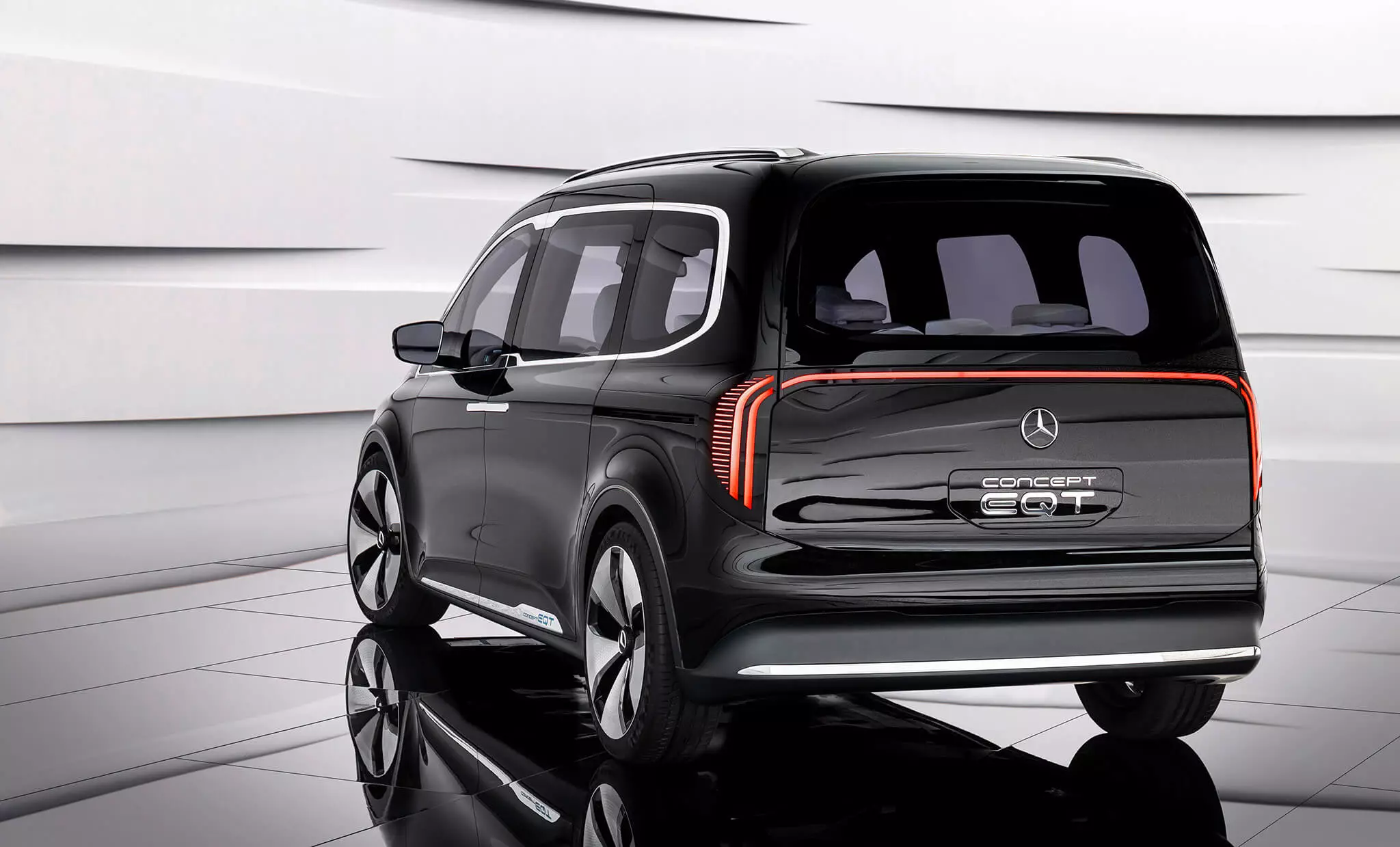
But, even having shrunk, the demand for people carriers exists, whether by large families, whether by passenger transport companies, or even bulk deliveries, in this case supplied by commercial variants of this type of bodywork that Mercedes-Benz already produces in its Citan, Sprinter and Class V ranges.
In the latter case there is even a clear intersection in the target customer of the new T-Class (which will have versions with combustion engine and this EQT), since the more compact version of the V-Class (4.895 m) is even smaller than the T (4.945 m) which the Germans call a compact van, but at almost 5.0 m long, 1.86 m wide and 1.83 m high, it is not exactly a small vehicle.
Florian Wiedersich, EQT's product marketing manager, points out that “the idea is to win over a type of customer for whom price is a very important factor and who understand that premium SUVs are too expensive, but who want a functional transport solution , spacious and for a potentially large user group”.
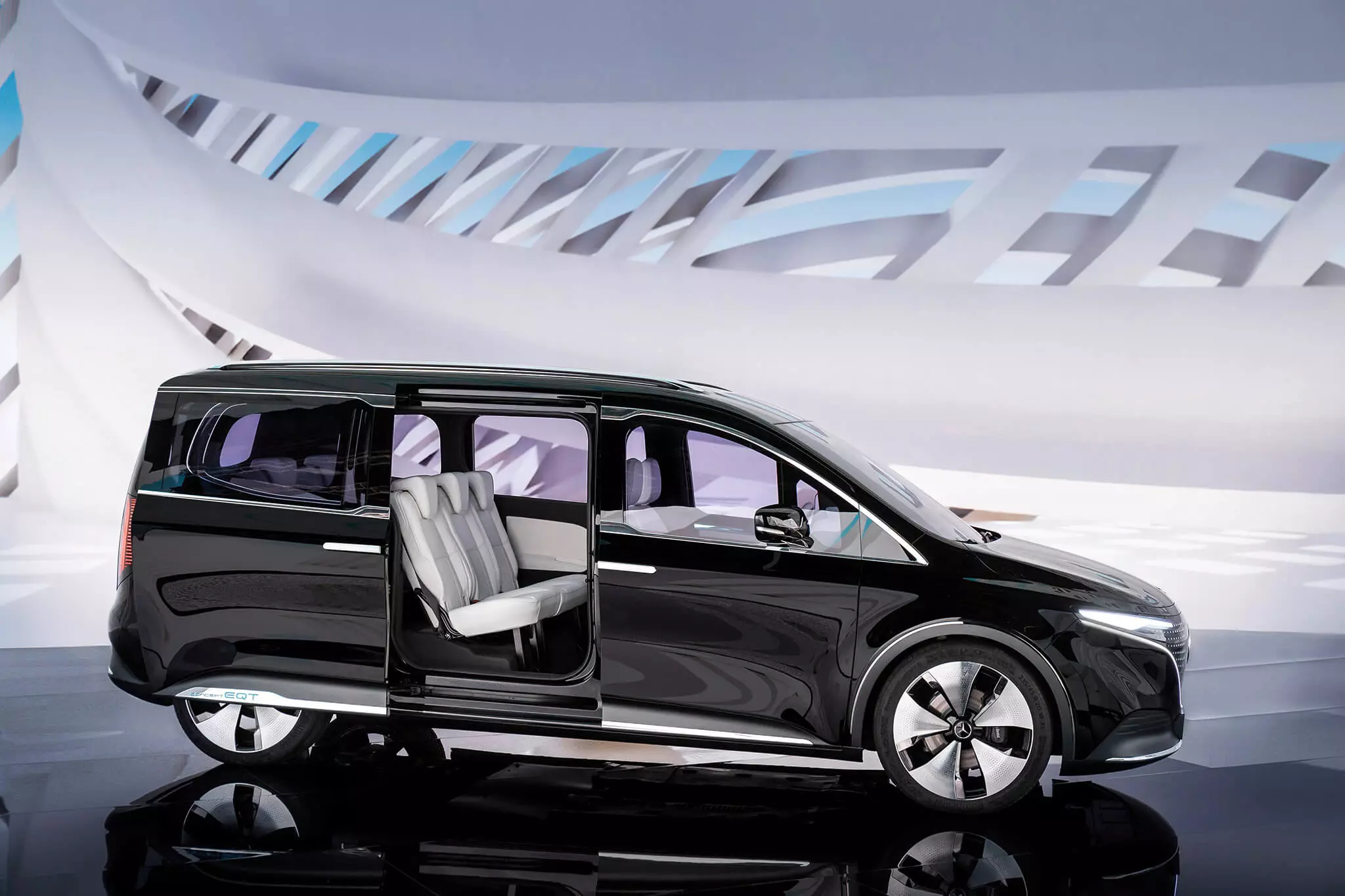
Up to seven occupants and up to five babies
The Mercedes-Benz EQT Concept has sliding doors on both sides that generate a wide opening so that it is possible to access the individual seats in the third row (which, like the three in the second row, are able to receive child seats) .
For this purpose, it is very useful that the backs of the second row seats (which are fixed) fold and descend in a single movement, as it is a very easy, quick operation and that creates a flat bottom. The two third-row seats can also move forward and backward a few centimeters to manage the space for those who sit in the back or create more luggage volume, or even be removed from the vehicle to further increase the carrying capacity.
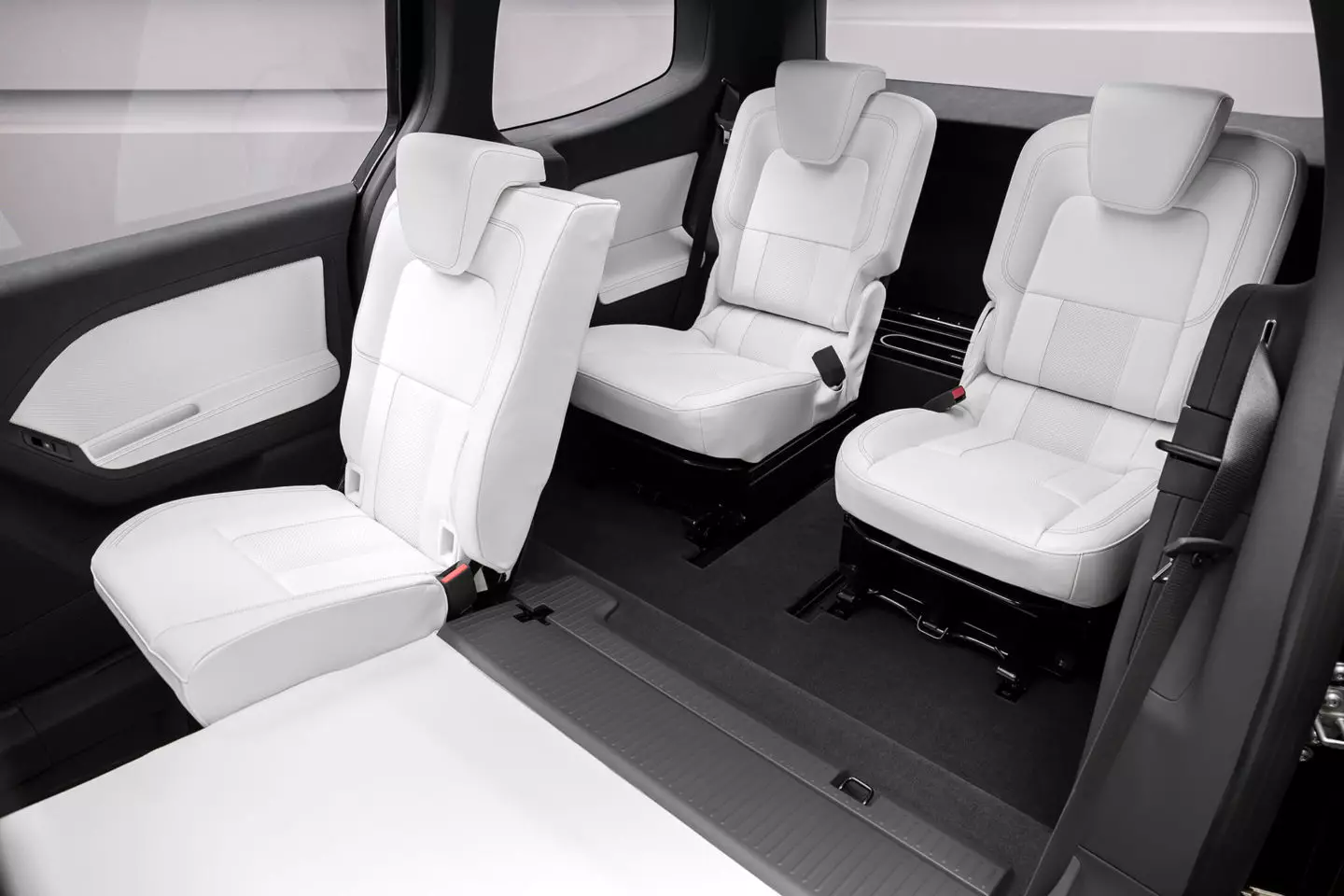
There will also be a shorter bodywork, with just two rows of seats (both in the Citan, T-Class and EQT), with a total length of around 4.5 m.
The spacious interior (which can be anticipated from the outside by the square shapes of the bodywork and the high roof, which has a translucent central area) is dominated by the white and black colors, the leather covering (partially recycled) of the white seats and the dashboard whose upper section includes a practical semi-closed storage compartment (above the instrumentation, where small objects or documents that you want to have at hand can be placed).

The round gloss black air vents, the galvanized finish elements and the multifunctional steering wheel with Touch Control buttons create an immediate connection to the Mercedes passenger model range.
The same can be said of the MBUX infotainment system, which can be controlled via the 7” central touchscreen, via the buttons on the steering wheel or, optionally, via the “Hey Mercedes” voice assistant with artificial intelligence (which will learn habits the driver over time and even proposes usual actions, such as calling a family member on Friday when this is a common practice).
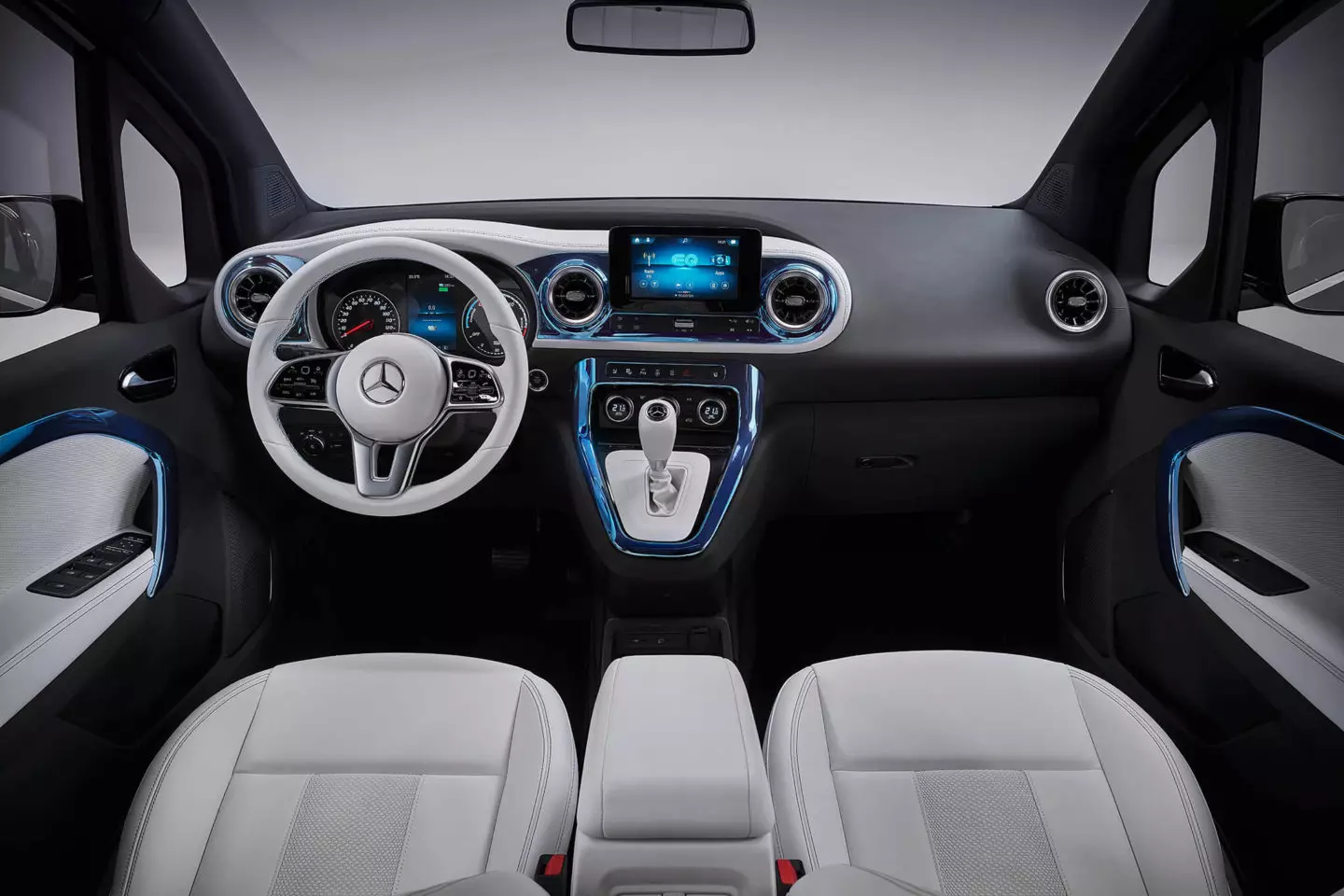
Modern Genes of the EQ Family
While not yet showing its final series-production version — which will hit the market in the second half of next year, a few months after the T-Class with petrol/Diesel engines — this concept car is easily recognized as a member of the EQ family by the dashboard Black front between LED headlamps with a glossy finish with stars in the background.
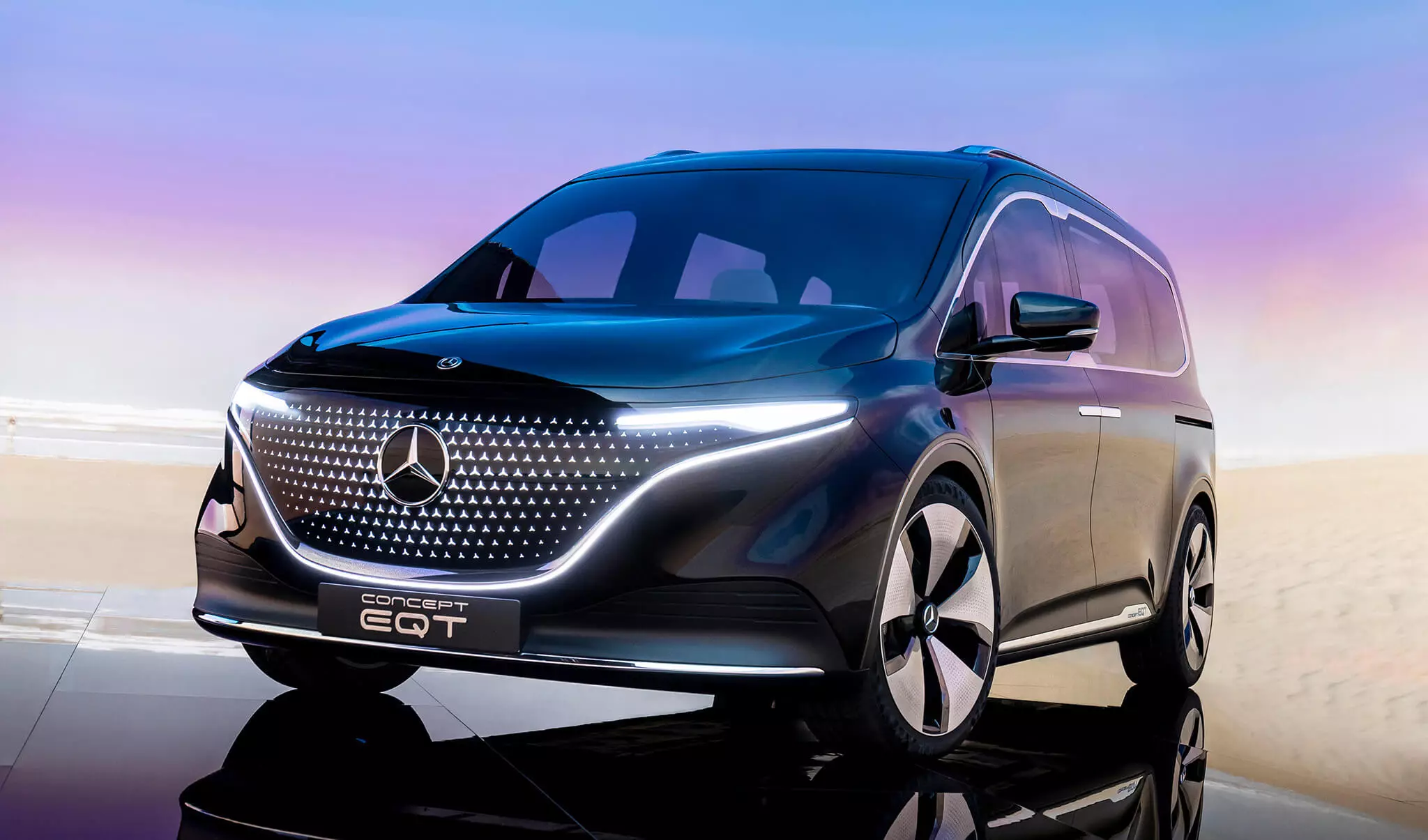
These stars (taken from the Mercedes symbol) of different sizes with a 3D effect are then repeated throughout the entire vehicle, whether on the 21″ alloy wheels (the standard ones will be smaller, probably 18" and 19"), on the panoramic roof and on the electric skateboard with which the concept is presented to associate it with leisure activities (along with a helmet and appropriate equipment for the activity, fixed to the backs of the two seats in the third row).
Also typical of EQ models, there's a LED cross-light strip across the entire width of the model, which helps create impactful contrast and also a signature night-time driving experience.
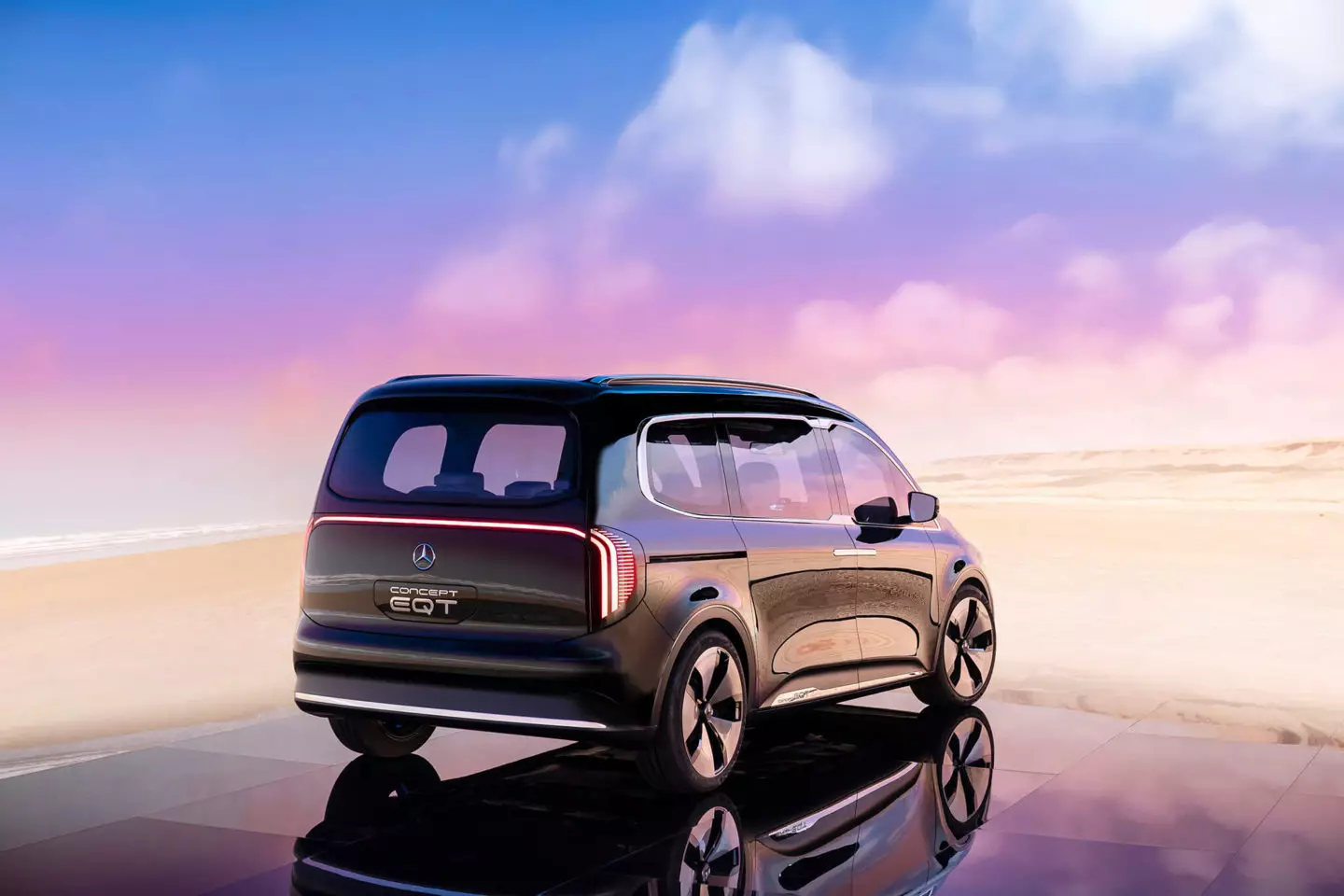
in the secret of the gods
Very little is known about the propulsion technique of the Mercedes-Benz EQT Concept… in some cases nothing at all. The rolling base will be shared with the new generation of the Citan (with two versions, Panel Van and Tourer), which will be launched in 2021, and the lithium-ion battery will have to be placed on the vehicle's floor, between the two axles.
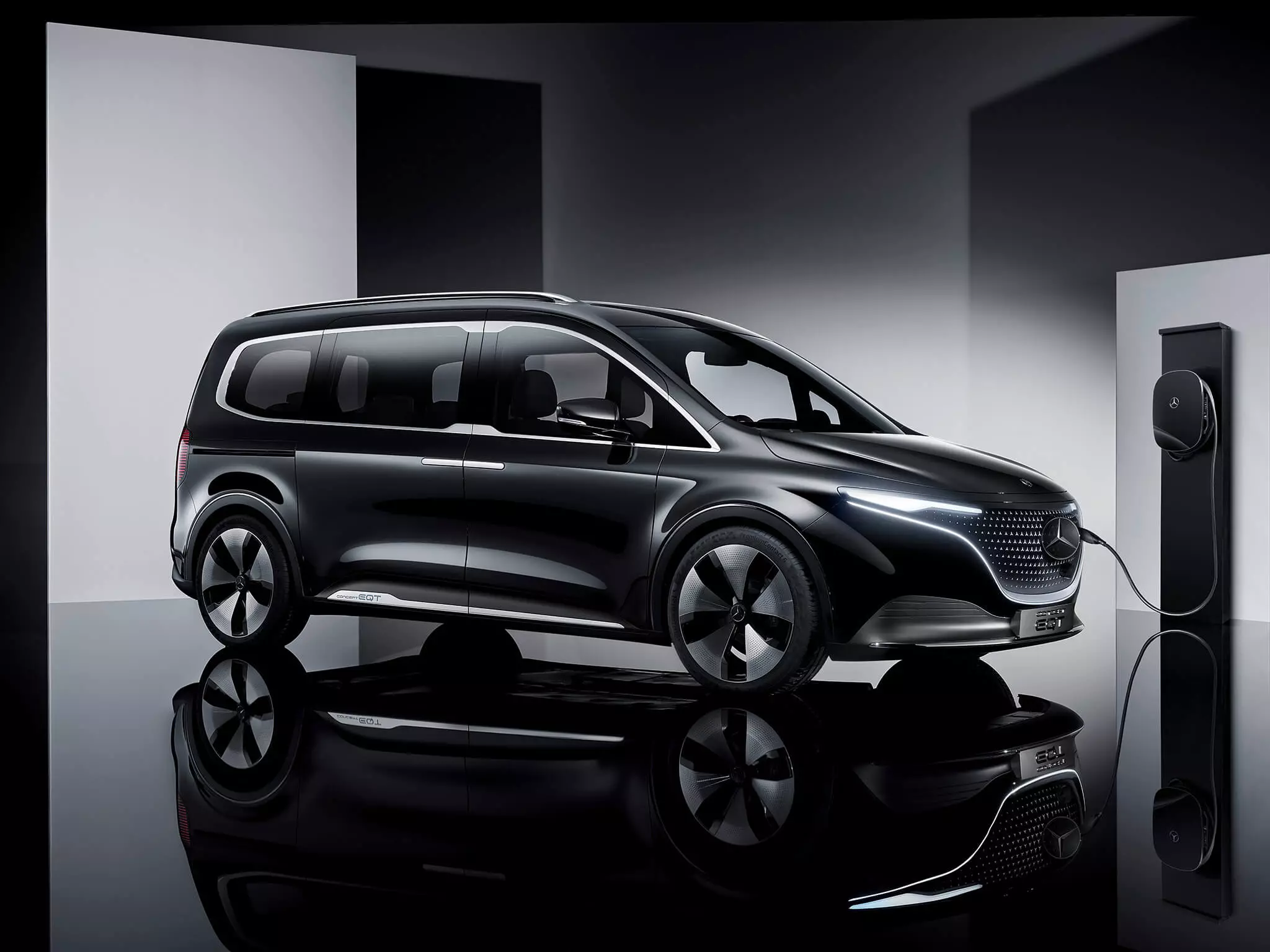
It will be smaller than the 100 kWh of the EQV (whose electric version is more than five meters long, being a heavier vehicle), which allows for a range of 355 km and loads of 11 kW in alternating current (AC) and even 110 kW in direct current (DC).
We shouldn't go too far from the truth if we aim for a battery with a capacity between 60 kW and 75 kW, for an autonomy in the order of 400 km, all these estimates.
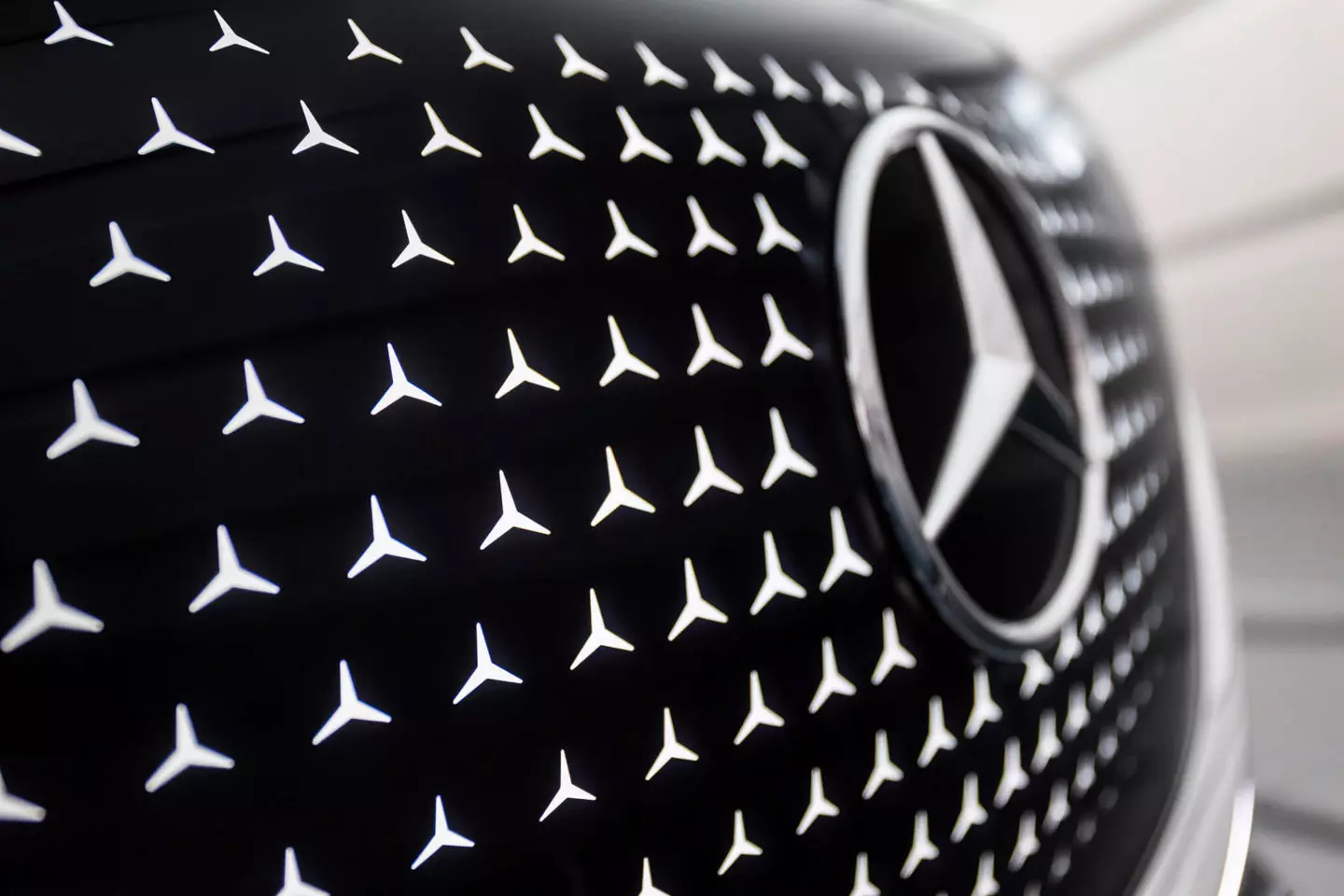
At this stage in which the Mercedes-Benz EQT only exists as a concept and just over a year after its arrival on the market, those responsible for the star brand are not willing to reveal more concrete technical data, thus avoiding giving away too many advantages to the competition...
